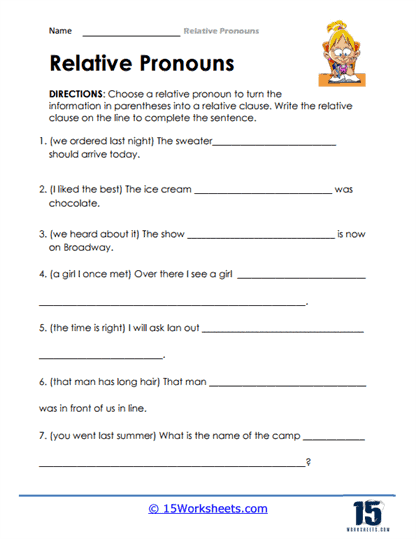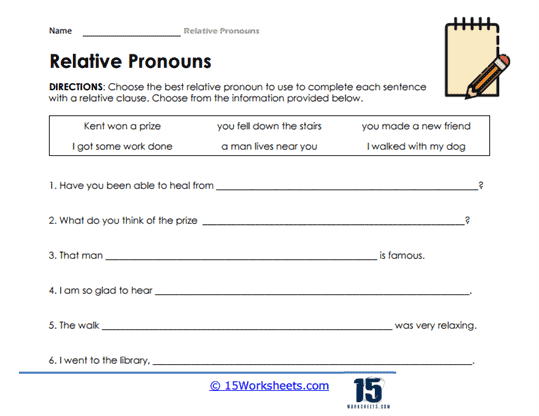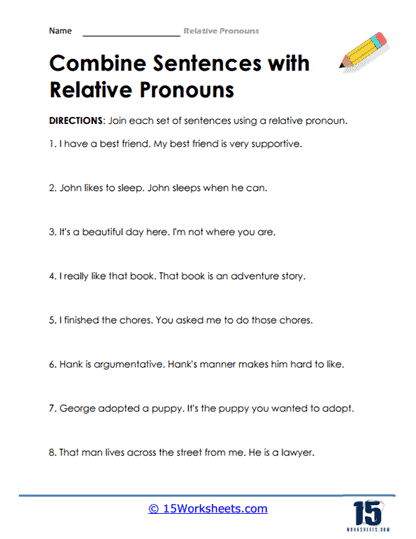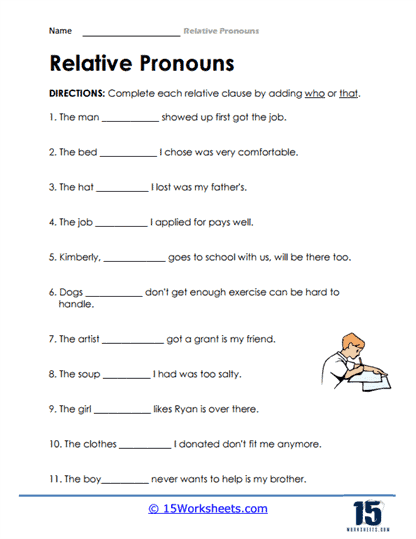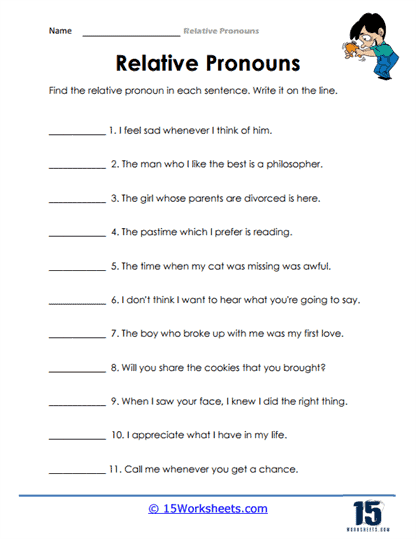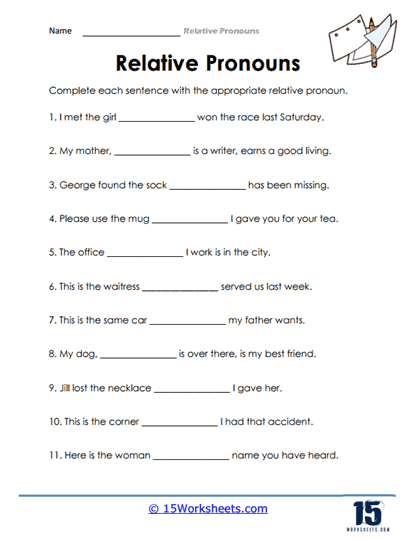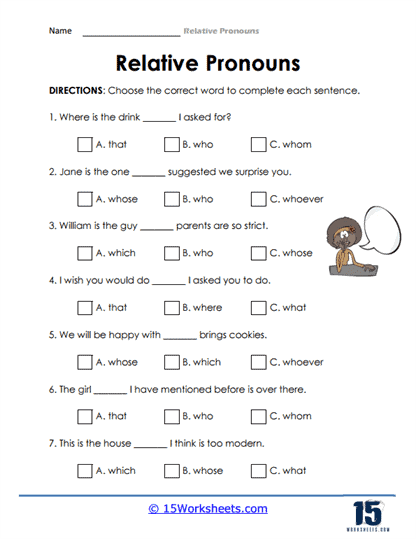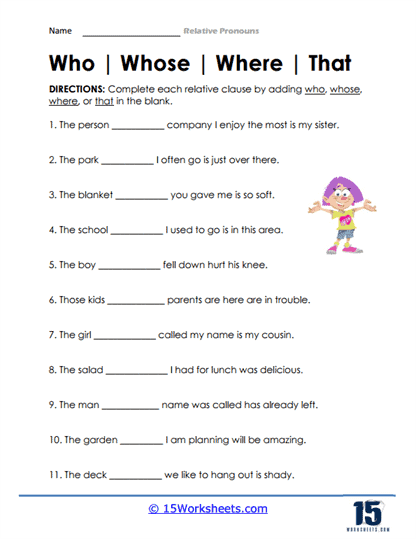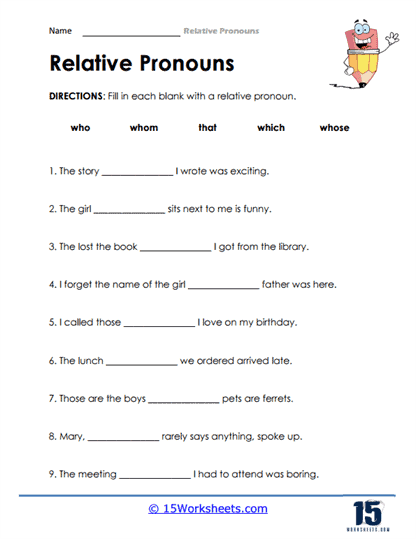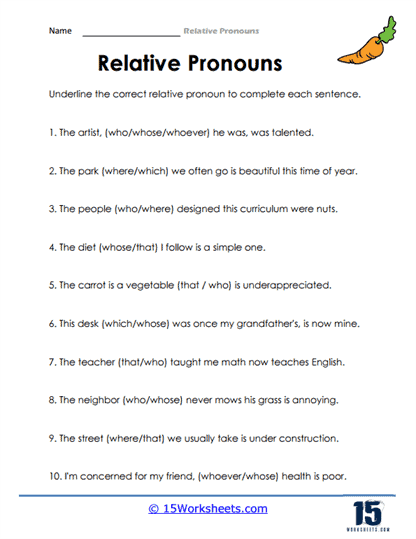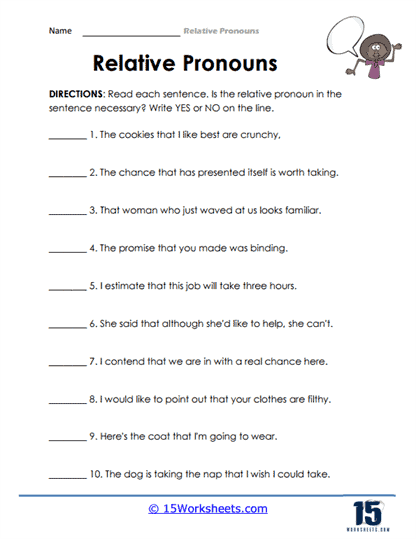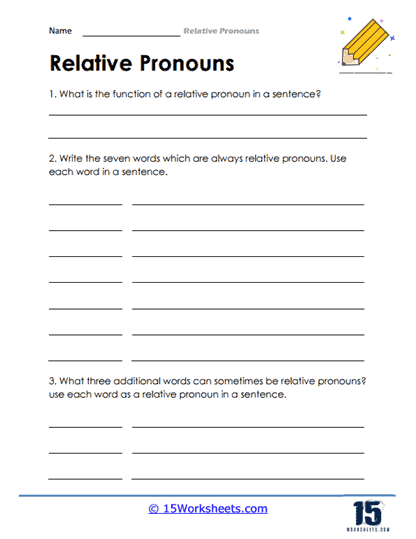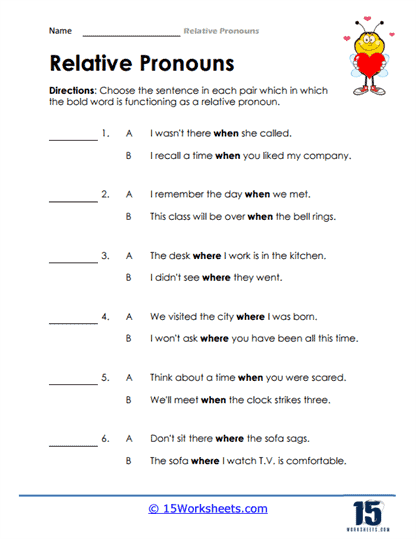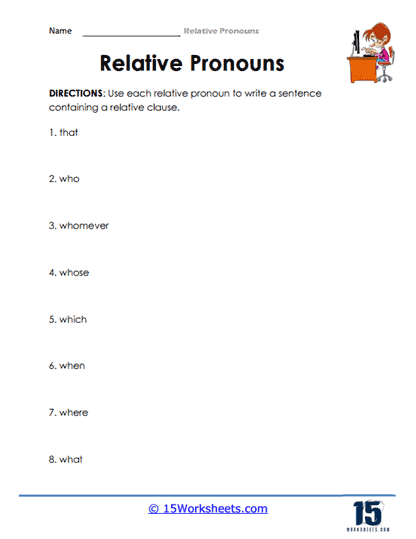Relative Pronouns Worksheets
All About These 15 Worksheets
These relative pronouns worksheets can aid teachers in teaching and reinforcing this important aspect of English grammar to their students. Relative pronouns are words that introduce a subordinate clause and relate it to the main clause in a sentence.
These worksheets include examples and exercises to help students identify relative pronouns in sentences and understand their functions. They also include a variety of activities such as filling in the blanks with the correct relative pronoun, identifying antecedents of relative pronouns in sentences, creating sentences using relative pronouns, and more. Through these worksheets, students will:
- Identify the relative pronouns and relative clauses in sentences;
- Complete sentences by supplying them with the correct relative pronoun;
- Answer short writing prompts to demonstrate mastery in the topic;
- And write their own sentences using relative pronouns correctly.
By completing these worksheets, students can develop a better understanding of how relative pronouns work and how they can be used to add detail and specificity to sentences. This can help them improve their writing and communication skills, as well as their reading comprehension.
What Are Relative Pronouns?
It’s critical to have a clear understanding of relative pronouns before moving on to how to utilize them. A sentence or phrase is joined to a noun or pronoun via a relative pronoun. The noun is described or modified by the phrase. The relative pronouns who, whom, whose, which, and that are the most often used. When and where are also occasionally employed as relative pronouns. A relative pronoun is a word that introduces and links an independent sentence to a dependent (or relative) clause.
A term that begins a dependent sentence and joins it to an independent phrase is known as a relative pronoun. Since they provide additional information about the subject of the independent phrase, relative clauses are also frequently referred to as adjective clauses. These sentences somewhat characterize the topic, just like adjectives do. Similar to conjunctions, relative pronouns connect clauses, i. In this example, a relative clause to its main sentence. A certain relative pronoun will be employed depending on the sort of noun being described.
Using Relative Pronouns
After the noun or pronoun they modify, relative pronouns are used. A related clause describes the sentence’s topic (italicized). These clauses are sometimes referred to as adjective clauses since they function as adjectives in the sentence because they describe a noun or a pronoun.
A relative pronoun introduces each phrase (in bold). The description is logically linked to the remainder of the phrase using relative pronouns. When and there, which are relative adverbs, are occasionally employed as relative pronouns. When and where are used as relative pronouns to begin phrases that describe nouns that pertain to time and location, respectively.
There aren’t many restrictions for using relative pronouns since there aren’t many of them. Remember them while you write. Relative pronouns are frequently used to start relative phrases, and they can be used as a possessive pronoun, subject, or object. The relative pronoun “whom” is rarely used in American English. Even though you might hear this in discussions, it’s advisable to utilize the phrase in writing to guarantee that your work is grammatically sound. No comma is necessary to separate the restrictive relative clause from the main phrase when relative pronouns are used to introduce them.
Compound and Possessive Pronouns
Although the word “compound relative pronoun” seems complicated, it is not. Simply put, compound relative pronouns refer to a group of individuals or objects collectively. Some examples are whatever, whichever, and whoever. The fact that both who and which may assume the possessive form “whose” may surprise some people. Some will debate which construction is preferable when speaking of objects as opposed to humans. However, this causes unnecessary unpleasantness. Truthfully, the term “whose” has been appropriately and extensively used to refer to nonhumans for hundreds of years.
It will be easier for you to provide crucial descriptive information in the form of adjective clauses if you are aware of how relative pronouns function in a sentence. After learning how they operate, you’ll be able to determine if your material is defining or non-defining and select the proper relative pronouns and punctuation to help your readers better comprehend what you intend.
In casual writing, we frequently omit the relative pronoun. We do this when the relative pronoun is the verb’s object and when defining relative clauses. We don’t omit the relative pronoun when the verb’s subject or in non-defining relative clauses.


